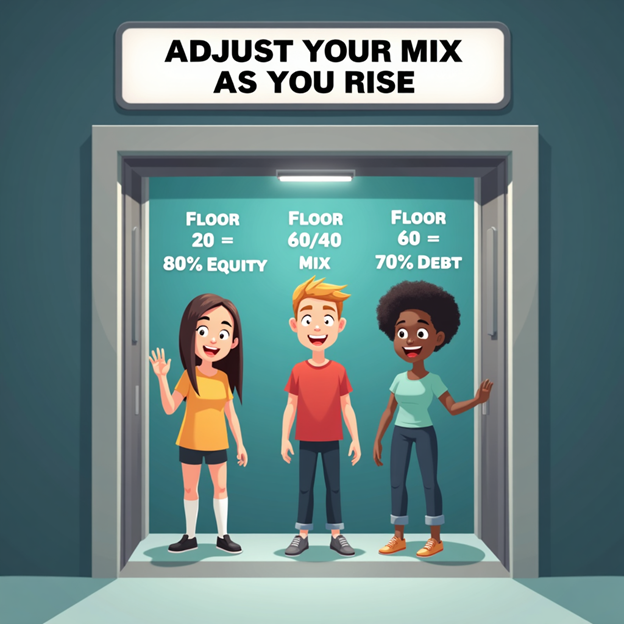There are no items in your cart
Add More
Add More
| Item Details | Price | ||
|---|---|---|---|
Your investment mix should evolve with your age. Learn how to balance debt and equity across life stages — from your 20s to retirement — with a practical asset allocation guide.
15/06/2025
You wouldn’t wear the same clothes to college, work, and retirement — so why should your investment strategy stay the same?
Your age and life stage should define how much you invest in equity (growth) versus debt (stability). Getting the debt-equity mix right ensures your portfolio grows when it should and protects when it must

What Is Debt-Equity Allocation?
It's the percentage split between high-growth assets (like equity) and low-risk assets (like debt) in your portfolio. This balance should shift as your risk capacity and financial responsibilities evolve.
Life-Stage Based Allocation: The 100 Minus Age Rule (with a twist)
| Age Group | Equity % | Debt % | Suggested Fund Types |
| 20s–30s | 80% | 20% | Equity, Flexi Cap, Thematic, Small Cap |
| 30s–40s | 70% | 30% | Large & Mid Cap, BAFs, Hybrid Equity |
| 40s–50s | 60% | 40% | Hybrid Funds, Balanced Advantage |
| 50s–60s | 40% | 60% | Conservative Hybrid, Debt Funds |
| 60+ | 20% | 80% | SWP from Debt Funds, Liquid Funds |

Conclusion
There’s no one-size-fits-all asset allocation — but age and goals are powerful starting points. Align your mix with your life, not the market news.
Review your portfolio’s asset mix today — and fine-tune it as your age, goals, and risk appetite evolve.
Summary Table: Debt-Equity Mix Across Life Stages
| Age Range | Equity % | Debt % | Portfolio Style | Risk Level |
| 20s | 80% | 20% | Aggressive Growth | High |
| 30s–40s | 70% | 30% | Balanced Growth | Medium–High |
| 40s–50s | 60% | 40% | Conservative Growth | Medium |
| 50s–60s | 40% | 60% | Capital Preservation Focus | Low–Medium |
| 60+ | 20% | 80% | Income Generation + Safety | Low |

Dr. Satish Vadapalli
Research Analyst